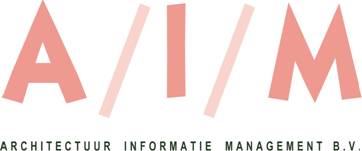
Content of ISO Technical Report TR9007 "Information processing systems -- concepts and terminology for the conceptual schema and the information base", released in 1983 and renewed in 1987.
 |
|
ISO TR9007 is a very important Technical Report from ISO. This Technical Report (type 3) contains the fundamental concepts and terminology for the conceptual schema, the information base, and the mechanisms involved in manipulating them. The approaches and associated languages described in the appendices A through H are intended to be explanatory only. ISO TR9007 has a successor in ISO/IEC FCD 14481.
Based on this Technical Report:
- A lot of concepts/terms were introduced and described as a standard. The following are among the most important:
- Data: The representation forms of information dealt with by infor mation systems and users thereof.
- Information: Any kind of knowledge about things, facts, concepts, etc. of a universe of discourse that is exchangable among users. Although exchangable information necessarily will have a representation form to make it communicable, it is the interpretation of this representation (the meaning ) that is relevant in the first place.
- Universe of Discourse (UoD): All those entities of interest that have been, are, or ever might be.
- Entity: Any concrete or abstract thing of interest, including associations among things.
- Information base: A collection of sentences, consistent with each other and with the conceptual schema, expressing the propositions other than the necessary propositions that hold for a specific entity world.
- The following principles where introduced:
- Helsinki principle: These utterances are to be interpreted (recursively) as international English utterances: Any meaningful exchange of utterances depends upon the priorexistence of an agreed set of semantic and syntactic rules. The recipients of the utterances must use only these rules to interpret the received utterances, if it is to mean the same as that which was meant by the utterer.
- 100 Percent principle: All relevant general static and dynamic aspects, i.e. all rules, laws, etc., of the universe of discourse should be described in the conceptual schema. The information system cannot be held responsible for not meeting those described elsewhere, including in particular those in application programs.
- Conceptualization principle: A conceptual schema should only include conceptually relevant aspects, both static and dynamic, of the universe of discourse, thus excluding all aspects of (external or internal) data representation, physical data organization and access as well as all aspects of particular external user representation such as message formats, data struc-
tures, etc.
- The TR9007 introduced the three level architecture, also called the three schemata or the 3-tier approach:
- Conceptual Schema: These A consistent collection of sentences expressing the necessary propositions that hold for a universe of discourse.
- External Schema: The definition of the external representation forms for the possible collections of sentences within the scope of a particular user's view including the manipulation aspects of these forms.
- Internal Schema: The definition of the internal representation forms within the computer for the possible collections of sentences that are in the conceptual schema and information base including the manipulation aspects of these forms.
- Standard descriptions of methods for information modelling like:
- Entity Attribute Relationship (EAR)
- Nijssen Information Analysis Method (NIAM)
- Infomod
In the 1990's a continuation of this standard was attempted, leading to the ISO/IEC FCD 14481 Conceptual Schema Modelling Facilities (CSMF). The TR9007 and the enterprise and information viewpoints of the ISO 10746: Reference Model for Open Distributed Processing (ODP) were input to this effort. Short description of RM-ODP and its viewpoints. Click here for the RM-ODP descriptive model. Click here to buy the ODP standard
The following is the table of content of the 1982 early version of ISO TR9007. The report itself is available in parts. Please click on the part of the content you are interested in
This text is an early, flat text of this technical report, including the quotes and without the pictures. If you want the technical report itself, please ask ISO. To buy the TR9007 1987, click here.
TABLE OF CONTENTS.
=======================================================================
APPENDICES.
=======================================================================
Appendix A. GLOSSARY OF TERMINOLOGY AND DEFINITIONS
Appendix C. THE PASCAL SYNTAX NOTATION
.Steven F.N. van 't Veld, Principal Consultant
- .Copyright 1998 - A/I/M b.v.
.March 1982
- Architectuur, Informatie & Management b.v.
- Postbus 85142, 3009 MC Rotterdam
- mobiel: +31/0 65 - 332 2595